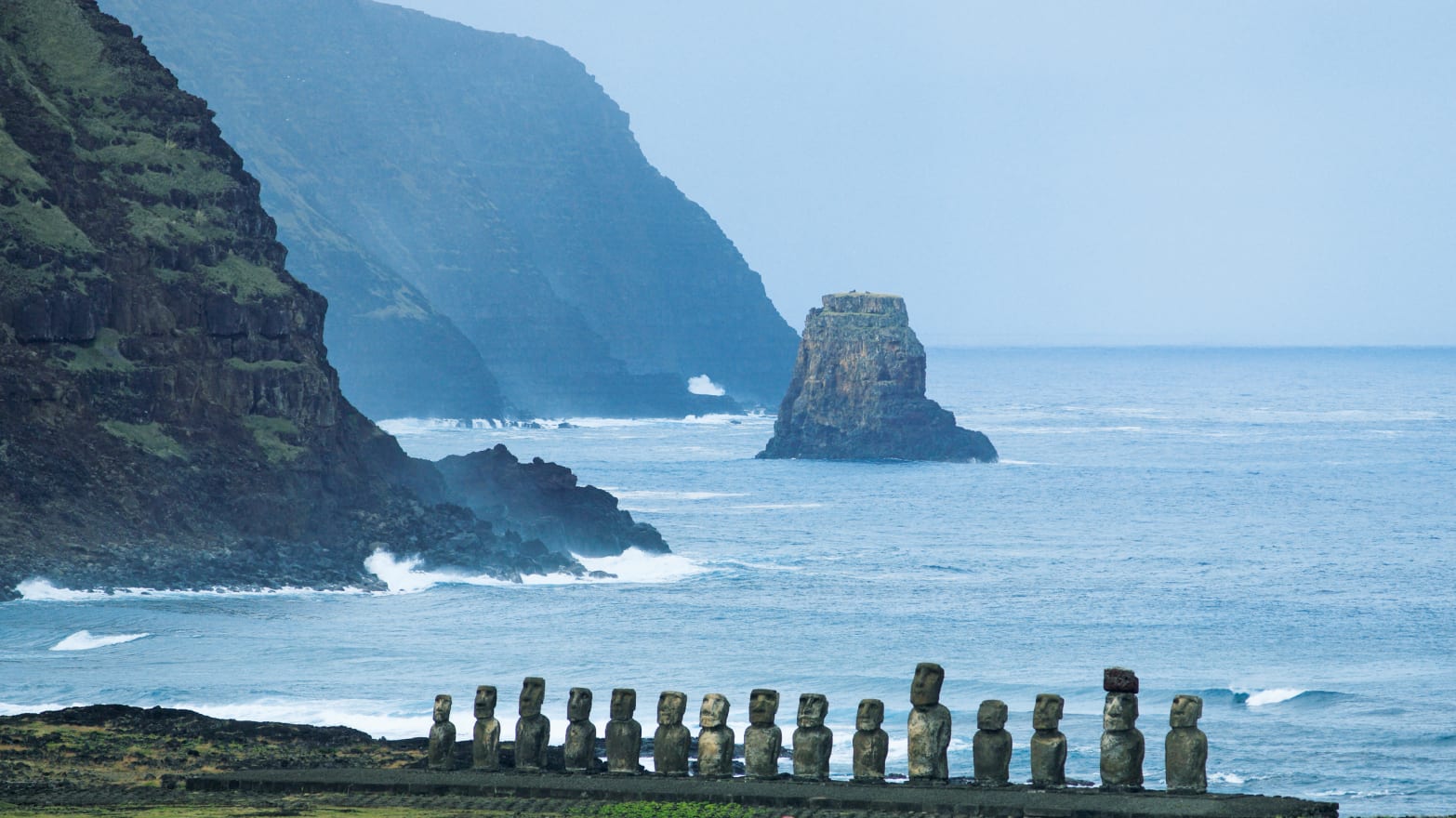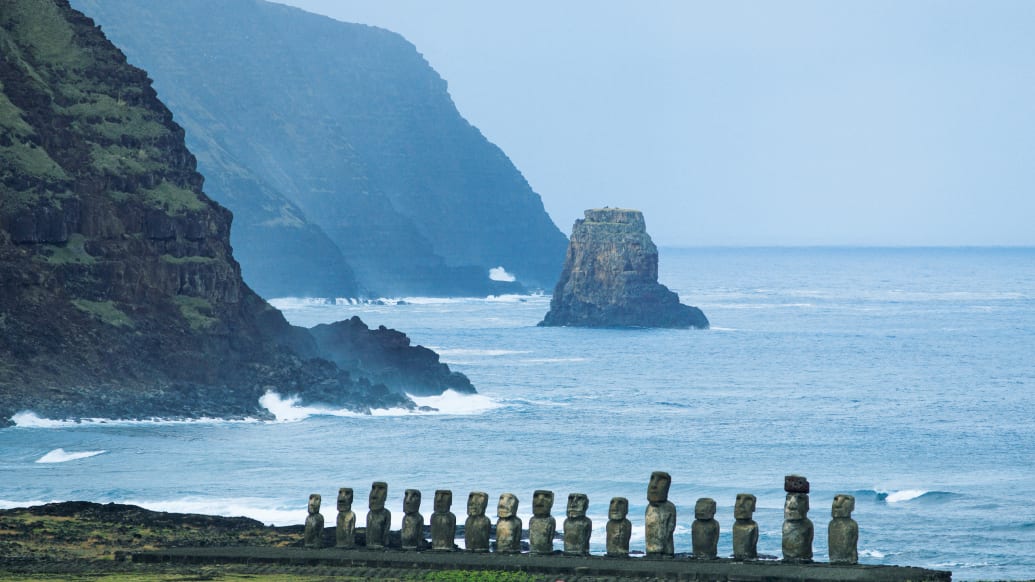
Site-specific art is some of the most exciting art on the planet. It’s not the art that’s generally in museums and galleries. More often you’ll find it in open fields, in libraries, in opera houses, in caves, on highways, in plazas, in sculpture parks, in state capitols, on the street, in the desert, in office buildings and even in hydroelectric plants. “Site-specific art.” It doesn’t sound good does it? It sounds formal and restricted, but at its best, it is immersive, moving, and very often overwhelming.
Five years in the making, Art & Place (published this month by Phaidon) includes some of the most outstanding examples of site-specific art in the Americas: from the markings of hunter-gatherers who stencilled the shape of their own hands onto cave walls some 9,000 years ago in a canyon in Patagonia, Argentina, to Anish Kapoor’s Cloud Gate that reflects the constantly changing city and sky in Chicago’s Millennium Square. The book’s geographical structure allows for an exciting sequence of works that vary in time, medium, and approach. Here, Neolithic monuments are juxtaposed with land art, jungle carvings with downtown murals, and public works with personal projects, such as the sculptures—and folly—of the wealthy eccentric Edward James, in the tropical rain forest a ten-hour drive from Mexico City.
There are sites that are familiar to everyone, like Easter Island with its enormous Moai figures standing over eight feet tall, but also far lesser known works, such as the totem poles of the Haida people on the Queen Charlotte Islands in British Columbia. Some are the creations of renowned artists, like Mark Rothko’s murals in the chapel commissioned by John and Dominique de Menil in Houston, or Nancy Holt’s Sun Tunnels that lie in the desert forty miles from the nearest town in Utah. Others express the genius of unknown artisans, such as the grisaille murals of the Monastery of San Nicolas de Tolentino in San Luis Potosí in Mexico, or of whole communities, like the caves painted in bright colors by the Chumash of California in a quest to communicate with the spiritual world.
What binds these works together is an overriding sense of place: the subject or meaning of all these works is closely intertwined with the location in which they are situated. And it is this that makes them some of the most adventurous, bold, and exciting to experience.
The book endeavors to take readers on a journey, from churches and cemeteries to open fields and shimmering deserts, and from humid rain forests to the high peaks of the Andes. Here are a few of my favorites:
Storm King Arts Center
Mountainville, NY
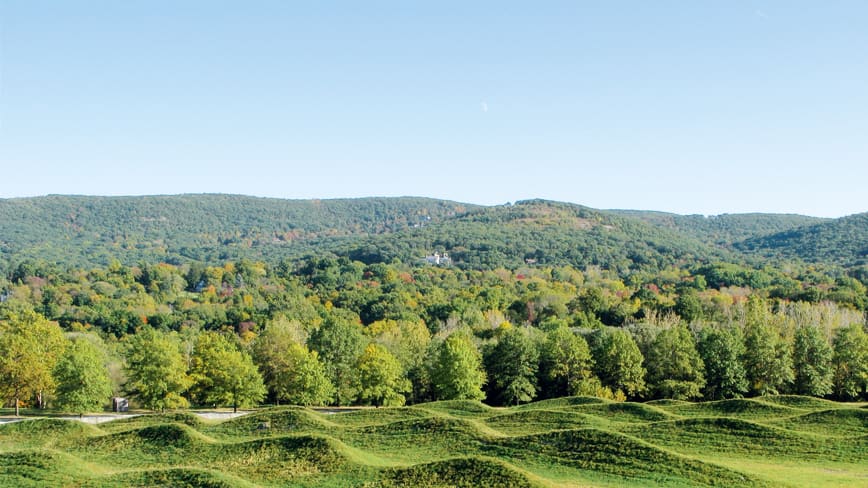
The Storm King Arts Center in upstate New York is a place where art and sculpture become one. The grounds are adapted for the sculpture and, in turn, the sculpture is made in response to the land. Isamu Noguchi’s Momo Taro rests gracefully on a hill that was enlarged and heightened for this purpose. Scattered across the landscape, works by Patricia Johnson, Maya Lin, and Daniel Buren are seen from the dramatic perspectives of the park’s rolling hills. Among the highlights are Richard Serra’s Schunnemunk Fork whose four steel plates play on the topology of the landscape and Andy Goldsworthy’s dry stone wall that meanders through the trees, down a gentle incline to a small lake.
Getty Center
Los Angeles, CA
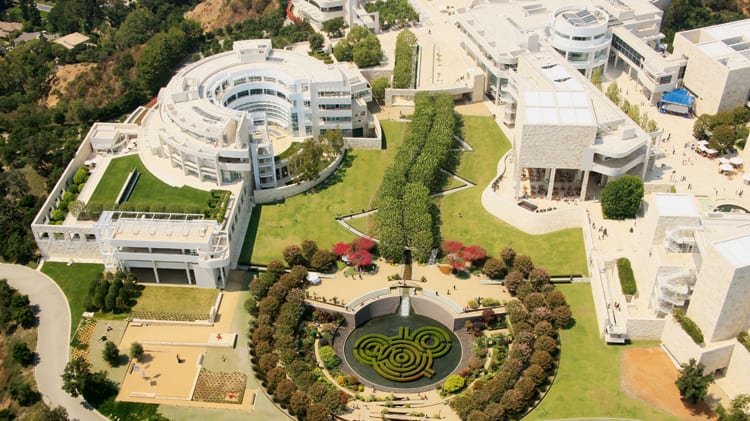
Robert Irwin, an artist known primarily for his installations of light and space, conceived the garden at Los Angeles’s Getty Center as a living sculpture of sound, light, color, and smell. Perennial native plants, deciduous sycamores, rocks, and water combine to form, as Irwin said, “a sculpture in the form of a garden, which aims to be art." A plaque in the garden reads: “Ever present, never twice the same. Ever changing, never less than whole.”
Chupinas Mesa
Sangre Cristo Mountains, Anton Chico, NM

On a mesa southeast of Santa Fe, artist Charles Ross created Star Axis, a reimagining of monuments, such as the 11th-century Serpent Mound in Ohio (also featured in Art & Place), with which Neolithic communities are thought to have tracked celestial objects to create a calendar. Ross’s naked-eye observatory includes the 11-story Star Tunnel, an inverted cone that aligns viewers with the Earth’s axis as they study the heavens.
Detroit Institute of Arts
Detroit, MI
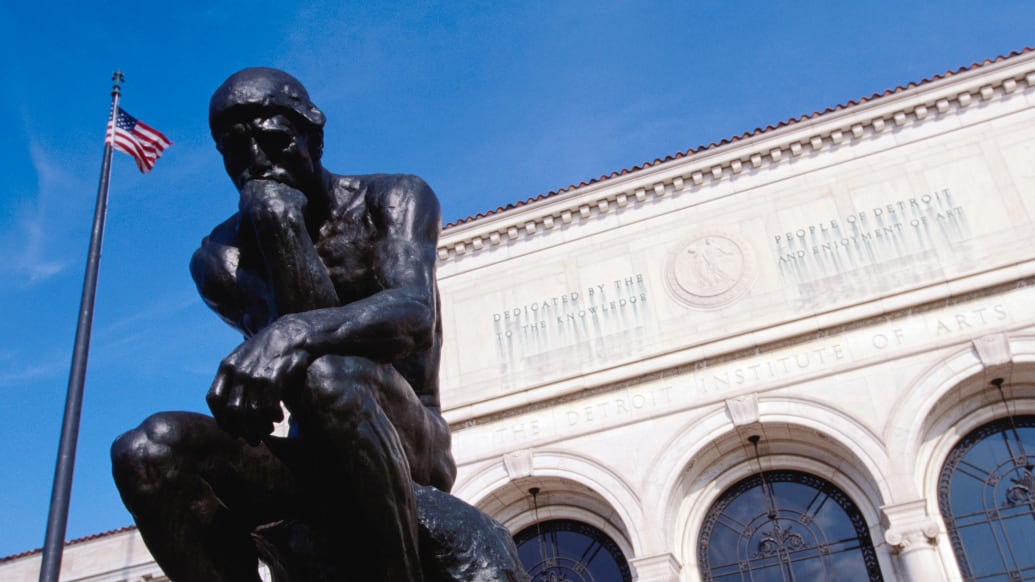
Diego Rivera was the leading Mexican muralist of the 1920s, and the twenty-seven fresco panels he painted in Detroit in 1932 and 1933 are among his greatest achievements. With a particular focus on the assembly lines of the city’s main company, Ford, Rivera filled the Garden Court with a celebration of technology that conflates modern machinery with Aztec deities to forge a mythology for the 20th century.
Vietnam Veterans Memorial
Washington, D.C.
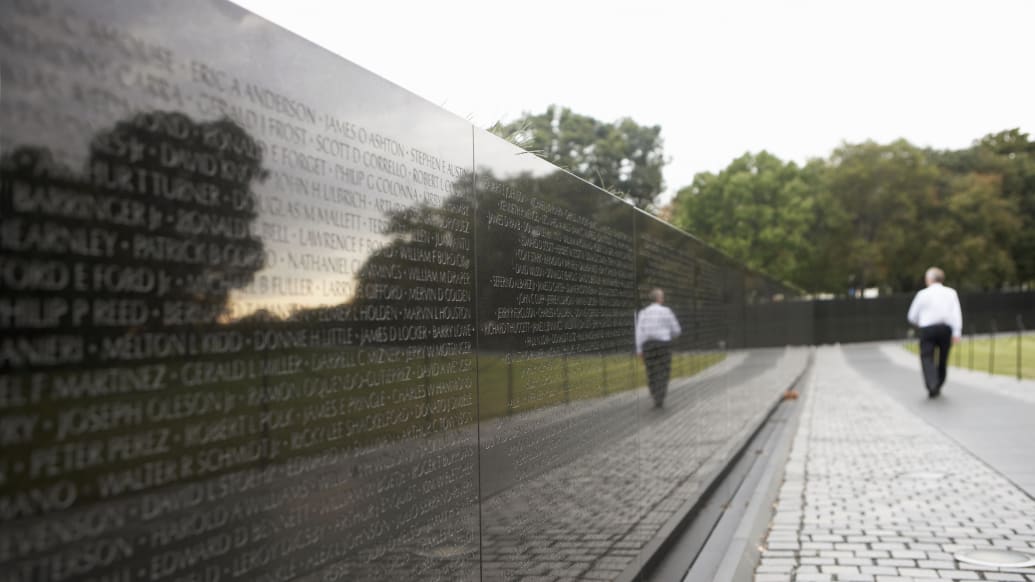
Created in 1982, Maya Lin’s wall of 58,000 names of victims of the war is firmly established as both a tourist attraction and a pilgrimage site for the bereaved. Having won a competition for the commission, the then-unknown undergraduate dug a scar-like wedge into the earth, 10 feet deep where the two walls meet, and lined it with 140 polished basalt panels carved with the names of the dead in the order in which they died, movingly combining the monumental with the intimate.
Easter Island/Rapa Nui
Isla de Pascua, Valparaiso, Chile
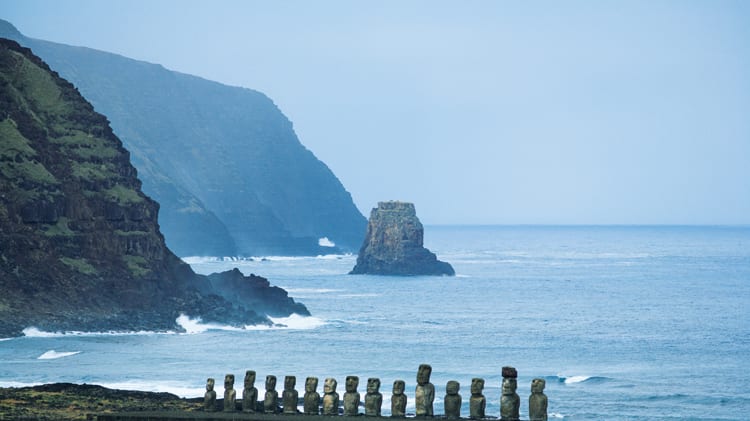
One of the most remote places on earth is home to the celebrated moai, huge stone heads representing ancestral spirits that were set up on platforms to watch over the Polynesian seafarers who settled here around 1000 AD. The islanders also carved more than 1,300 petroglyphs of animals and deities before the culture effectively vanished in the 15th century—their survival partly undermined by the effort devoted to the production of the moai themselves.
Boston Public Library
Boston, MA
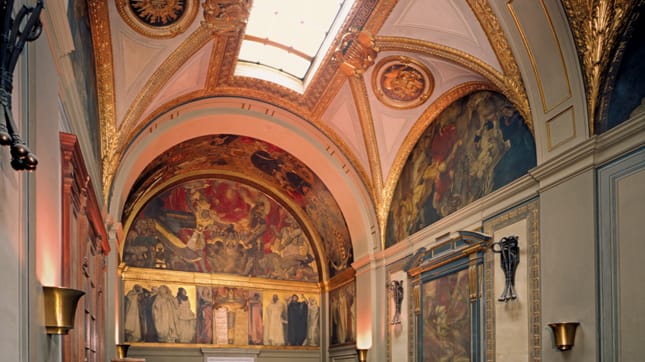
Learning and art have gone together since the Renaissance, and the high-art murals that adorn Boston Public Library are an 1890s’ restatement of that tradition. Three artists were involved: Pierre Puvis de Chavannes and Edwin Austin Abbey decorated the staircase and corridors. But the highlight is the vaulted hall with John Singer Sargent’s powerfully dramatic series of episodes from the Old and New Testaments.
Cueva La Pintada
Mulegé Municipality, Baja California Sur, Mexico
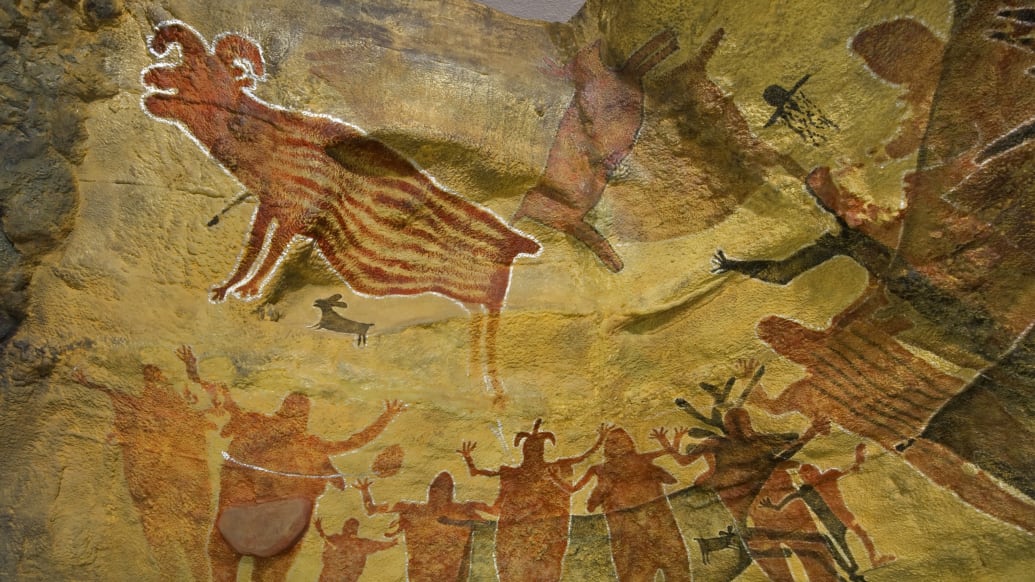
The Painted Cave is just one of 250 painted caves in the remote Sierra de San Francisco mountains of Baja California. Created over two millennia ago—from 1100 BC to AD 1300—the paintings display a remarkably consistent style: human figures, birds, and herds of animals are outlined in white chalk filled with black, red, and brown. The artists were likely Cochimíes hunter–gatherers, but the height of the drawings—some are several yards tall—resulted in locals attributing them to a vanished race of giants.
Cemeterio Central
Bogotá, Columbia

In the former cemetery of Bogotá, Columbia, the artist Beatriz González has covered the remaining Roman-style columbariums—tombs that contained funerary urns—with 8,957 serigraphs. The tile-like images repeat eight black-stencil designs based on newspaper photographs of victims murdered for opposing Columbia’s narcotics industry, movingly continuing the site’s function of honoring the memory of the dead and giving public art a political dimension.
Nasca Lines
Pampas de Jumana, Peru
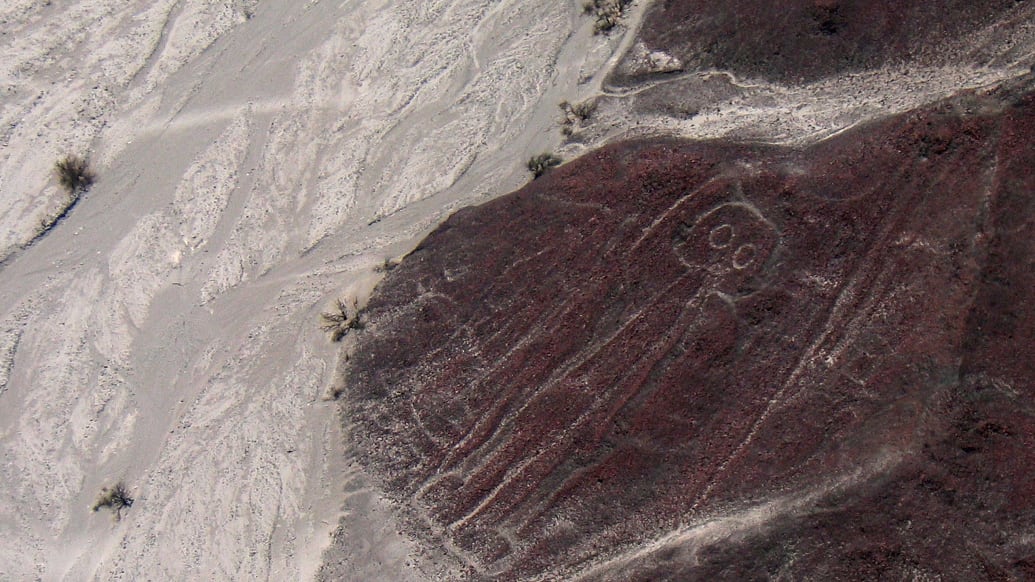
The huge designs scraped into the coastal desert of Peru have long caused speculation, with current thinking being that the 70 odd images—from a hummingbird to a whale, and from a spider to geometric shapes—perhaps marked processional routes or had astronomical significance. Whatever the case, their scale suggests that their creation occupied much of the community over generations.
Church of Santo Domingo
Puebla, Mexico
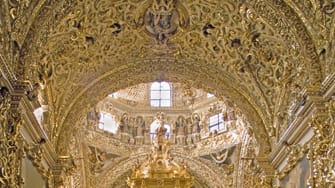
There is no shortage of potential “Eighth Wonders of the World” but worshipers at this Dominican church count its 17th-century Chapel of the Rosary as a serious contender. Forty years in the making, the chapel’s walls and dome are encrusted with baroque sculptures—saints, cherubs, and dancing angels—in gold leaf and plaster, while golden vines frame six oil paintings depicting the mysteries of the rosary. The sheer exuberance and excess of gilded stucco appears to dematerialize the walls—an effect widely echoed in later Mexico, but rarely if ever to such effect.

